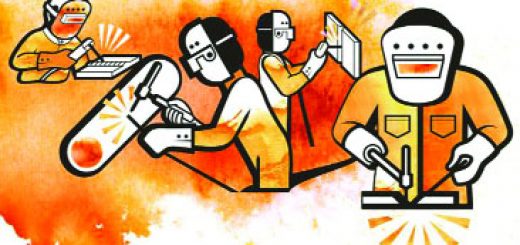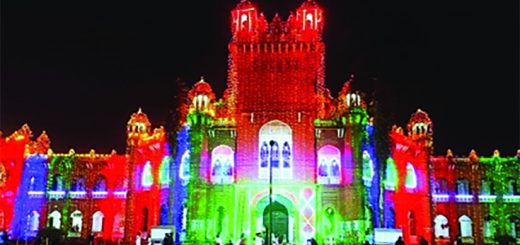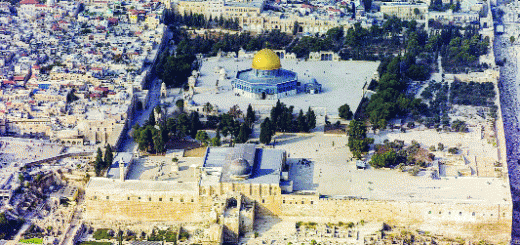Things That Transcend Time
Wahidul Islam#
Transcendent ideas are those which rise above other ideas as best times are those which are remembered for centuries. Worst people are those whom different generations condemn for generations. Best books are those which a large number of people read for centuries as best films are those which transcend national or cultural boundaries. Similarly the best buildings or structures are those which sustain for centuries and used by myriads of people. These structures testify their construction process, materials, tastes of the builders and architects and above all time. In this transitory world some structures and some ideal persons stay towering over others.
Why Things Last Long
Though everything in the world is destined to be destroyed solid foundation is a secret of a sustainable structure. Quality inputs always end up in quality outputs. So for a steel structure it is equally important to choose the best steel, best stone for a stone-building, best iron for an iron-work. In this way, for a brick-building quality brick is important, for gold ornament gold, and for diamond ring real diamond is a must. Proper grooming in the childhood forecasts how far the child would go in future as morning shows the day and child shows the man. For development in education rise in the number of chair, table and number of books with political intentions are not enough. A recent study shows in Indonesia educational infrastructure was increased by 100 percent but education quality increased merely by two percent. For quality education a country needs to invest in nutrition of children and in empowerment of teachers as well. Investment of one taka in nutrition of a child yields 40 taka in value. Even for sustainability of a marriage the couple needs to synthesize their love, commitment and economic solvency; otherwise it will be dysfunctional and will eventually collapse.
Why Things Don’t Sustain
Inherent weaknesses are primarily responsible for collapse of anything. Ever corroding cores make something inwardly feeble. It is the internal factors which help human achievement sustain for millennia and in most cases they are good moral qualities. Some may argue about the external forces that cause damage to the things in question. In most cases such arguments are given to hide the internal flaws in self-defence. Fishes rot in head first as country leaders go to dog first then the nation. In most cases causes of fall lie in the very structure of things. A proverb goes: If you want to wreak havoc on a nation just destroy the infrastructure of proper education and economy of it. If you find a theory is wrong simply you can predict the things based on that must fall apart.
If a student fails in exam, it testifies that s/he didn’t study and prepare properly. If an army of a country fails because it failed to live up to the military expectations, equipping them physically, intellectually and in state-of-the-art weaponry. Failure as a teacher albeit lies in his absence of development initiative, be it personal or institutional.
In this way whenever a professional fails, it is only due to his failure to upgrade and update him or herself timely. For a total collapse you need to have both internal and external weaknesses but the internal weakness prevails. It is undeniable that external pressures are always active on everything. For materials of the world it is a truth. The construction materials like iron, block, stone for non-living things collapse corrodes from outside. The corrosion is accelerated the matters are weakened. Rana Plaza is an example of the unholy nexus between corrupt owners, engineers and the building authorities concerned. The present day buildings are falling apart soon before its shelf life ends because of the mercenary contractors, political cronies, corrupt ministers and government officials.
Their unholy alliance is not only looting from the public exchequer but also depriving Bangladesh of future heritages.
Structures of Last Centuries
Bangladesh is home to many century-old buildings and structures.
A good number of them have been ruined and also out of use but the story focuses on those buildings which have observed centenary or bicentenary or tercentenary founding anniversary and still in use. Shat Gambuj, Ahsan Manzil, Manuk House, the houses of Nawabs of Dhaka like Chhoto Katra, Boro Katra, some mosque buildings in Bangladesh, Hardinge Bridge are now century-old structures. There are some old Hindu temples and Buddhist biharas. There are as many as 3500 archaeological sites in Bangladesh but archaeological department only takes care of 500 sites.
Shat Gambuj, Nine dome, Singara, Ronvijoypur, Chunakhola mosques
A few of historical sites under the jurisdiction of archaeological include Sixty Pillar Mosque (the Shat Gambuj), in Bagerhat in south Bangladesh, on the eastern bank of a sweet water tank or pond is one of the oldest mosques in the country and is described as “historic mosque representing the Golden Era of Muslim Bengal”. It is laid on an area of 160 feet by 108 feet. The mosque is unique in that it has 60 pillars that support 77 exquisitely curved “low squat domes” that have worn away over time; it has seven central domes that are four-sided and built in Bengali style. It was established in 1440 by Khan Jahan Ali. Beside Shat Gambuj the greater and old Jessore region is home to some century-old mosques like Nine-dome, Singara, Ronvijoypur, Chunakhola and Barobazar mosques.
Ahsan Manzil
Though Khan Jahan Ali synthesised mosques, ruling centre and abode together but the Nawabs of Dhaka established sustainable houses which in turn were used as offices. That doesn’t necessarily mean Nawabs were not very generous and just rulers. Ahsan Manzil was the official residential palace and seat of the Dhaka Nawab Family. This magnificent building is situated at Kumartoli along the bank of the Buriganga River in Dhaka. Completed in 1872 it was constructed in the Indo-Saracenic Revival architecture. Now it has been designated as a national museum.
Lalbagh Fort
Lalbagh Fort (also Fort Aurangabad) is an incomplete 17th century Mughal fort complex that stands proudly before the Buriganga River in the south-western part of Dhaka, Bangladesh. The construction was started in 1678 AD by Mughal Subahdar Muhammad Azam Shah who was son of Emperor Aurangzeb and later emperor himself. His successor, Shaista Khan, did not continue the work, though he stayed in Dhaka up to 1688.
Chhoto Katra
Choto Katra is one of the two Katras built during Mughal’s regime in Dhaka, Bangladesh. It was constructed in 1663 by Subahdar Shaista Khan. It is on the bank of the Buriganga River. Basically it was built to accommodate some officials and Shaista Khan’s expanding family. Chhoto Katra is slightly smaller than Bara Katra, but similar in plan and it is about 185 metres east to it.
Bara Katra
Bara Katra is a historical and architectural monument located in Dhaka. ‘Katra in Arabic means ‘Caravan (Karwan) Sarai’ or colonnaded building. It is a palatial building dating to the reign of the Mughal dynasty in the Bengal region. It is situated to the south of Chawk Bazaar close to the north bank of the river Buriganga. Bara Katra was built between 1644 and 1646 CE to be the official residence of Mughal prince Shah Shuja, the second son of Emperor Shah Jahan. The prince endowed it to his diwan and the builder of the sarai, Abul Qasim.
Musa Khan Mosque
Musa Khan Mosque is located on the western side of the Shahidullah Hall of Dhaka University, and is less than half a km to the south of the Khwaja Shahbaz’s Mosque. It was constructed by Musa Khan in between 1599 and 1610. He was son of Isa Khan— one of the twelve landlords of medieval Bengal. A high vaulted plinth with a three-domed mosque above and the grave of Musa Khan to its northeast comprise the mosque complex of Musa Khan.
Dhakeshwari temple
Culturally diverse Bangladesh is home to many temples and the Dhakeshwari temple is one of them. It was built in the 12th century by Ballal Sen, a king of the Sena dynasty, and many say the city was named after this temple. The current architectural style of the temple cannot be dated to that period because of the numerous repairs, renovations and rebuilding which have taken place over time. It is considered an essential part of Dhaka’s cultural heritage.
Armenian Church
In 1781 the now famous Armenian Church was built on Armenian Street in Armanitola, then a thriving business district. The site was an Armenian graveyard before the church was built, and the tombstones that have survived serve as a chronicle of Armenian life in the area.
Hardinge Bridge
Hardinge Bridge is one of them which has recently crossed the landmark of being a century-old structure. A rail bridge located at Pakshi in Pabna was constructed by the British rulers in 1915 during the World War I when Ottoman Empire was preparing for total collapse. Britain had no mine of iron but it mastered the art of using the iron and iron ore imported mainly from Russia.
How ideals transcend time
Ideals which benefit people infallibly must pass the test of time. Scientific theorist or social idealists sometimes become popular beyond the national boundaries. People, benefitted by these scientific and social theories or prophetic ideals, commend them for centuries provided that they are flawless. Over three thousand years ago when the ruling Pharaoh failed mete out social and economic justice to common people of his time Prophet Moses’ ideals appealed to the common people. His ideals were talked about by the destitute and commoners. The oppressed used it as a litmus paper to test the tyranny of Pharaoh Dynasty. In the same way ideals of idolatry of the infidels in the time of Prophet Mohammad (PBUH) failed to cater to the taste of the poor and the women. So the Prophet’s ideals appealed to a small section first, then half of the world in the seventh century and still today it is appealing. Before the last Prophet Muhammad (PBUH) Prophet Jesus (PBUH) appealed to the contemporary world to follow what was revealed on him and had a large number of Christian following. Greek civilization was at its peak at that time of Jesus (PBUH).
Similarly good qualities can transcend time if it is exceptionally demonstrated. Telling truth by the legendary figures may be discussed by common people for centuries. Abdul Kader Jilani, for example, spoke the truth to the muggers. Finding the robbers failing to find out where the gold coins are. Little boy Abdul Kader disclosed to the robbers that his mother sewed coins under his arms. His truth-telling startled even his attackers. In this way any heroic activity of predecessors to uphold the righteousness may inspire the successors to follow for decades.
Lasting Peace on Planet
For sustainability of the world population food, shelter, clothing, education and medication. These are universal basic needs. Proper management of the planet is impossible without ensuring basic human need. If food is in short supply in a country its regime won’t be safe. Anytime there may be mass upsurge and in turn regimes will be changed. Diametrically if a monarchy or dictator ensures basic needs of his people it may sustain in power for a long time. So poverty alleviation should be the first agenda of any regime. In order to do so employment creation is a must. Then comes the question of encouraging all the right and scientific ways and discouraging all sorts of bad and harmful ways. In this way a world system or a government can sustain and can have transcendental moments. Survival throughout the history is possible only in such way.
When people, devoid of creativity want to be remembered transcending his time, follow a shortcut way. Construction of luxurious edifices or skyscrapers with costly fittings makes them famous for some time. To do so they use their wealth amassed in most cases illegally or injudiciously or in collusion with people in power. With precious stonesand gems they want to survive in history. In such cases the landlords of old times or corporates of modern times in question exploit common people depriving the later of their rights. Of course they maintain nexus with the powerful people in position over the years. Sometimes such a sustainable houses turn into haunted houses because after their death and destruction. They are either occupied or become haunted house. But it doesn’t happen usually to sustainable public buildings because they come to the great use by millions for hundreds of years, saving the public funds effectively.
In fine the idea of living through ages is as old as human history. It is inbuilt in human nature to be famous and remain so. Some quality things made of quality stone, steel, aluminium or other metals sustain through ages. In the same way persons with immortal qualities and creativity rewrite history by leaving some identical examples of actions, putting an end to temporariness and transience.












Recent Comments